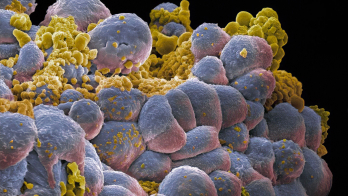
The International Union of Pure and Applied Chemistry (IUPAC) has announced the provisional names of four new super-heavy elements that complete the seventh row of the periodic table. The researchers responsible for the discoveries, which were made in Japan, Russia and the US during the past decade, proposed the following names for peer review: nihonium (Nh) for element 113; moscovium (Mc) for 115; tennessine (Ts) for 117; and oganesson (Og) for 118.
Having reviewed the proposals and recommended them for acceptance, the IUPAC Inorganic Chemistry Division set in motion a five-month public review that will come to an end on 8 November, prior to formal approval by the IUPAC Council. Keeping with tradition, newly discovered elements can be named after a mythological concept or character (including an astronomical object); a mineral or similar substance; a place or geographical region; a property of the element; or a scientist.
In conjunction with the International Union of Pure and Applied Physics, IUPAC has also attached priority to the discovery claims. Element 113 was discovered by a collaboration at RIKEN in Japan, while elements 115 and 117 were synthesised at the U-400 accelerator complex at the Joint Institute for Nuclear Research (JINR) in Dubna, Russia, via a collaboration with the Lawrence Livermore National Laboratory (LLNL) and Oak Ridge National Laboratory in the US. The discovery of element 118 was attributed to a JINR–LLNL collaboration, which in 2011 was also acknowledged by IUPAC for the discovery of elements 114 (flerovium) and 116 (livermorium).








